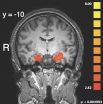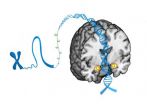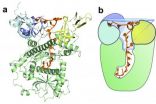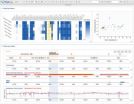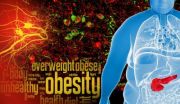(Press-News.org) Issues of crime and punishment, vengeance and justice date back to the dawn of human history, but it is only in the last few years that scientists have begun exploring the basic nature of the complex neural processes in the brain that underlie these fundamental behaviors.
Now a new brain imaging study – published online Aug. 3 by the journal Nature Neuroscience – has identified the brain mechanisms that underlie our judgment of how severely a person who has harmed another should be punished. Specifically, the study determined how the area of the brain that determines whether such an act was intentional or unintentional trumps the emotional urge to punish the person, however gruesome the harm may be.
"A fundamental aspect of the human experience is the desire to punish harmful acts, even when the victim is a perfect stranger. Equally important, however, is our ability to put the brakes on this impulse when we realize the harm was done unintentionally," said Rene Marois, the Vanderbilt University professor of psychology who headed the research team. "This study helps us begin to elucidate the neural circuitry that permits this type of regulation."
In the experiment, the brains of 30 volunteers (20 male, 10 female, average age 23 years) were imaged using functional MRI (fMRI) while they read a series of brief scenarios that described how the actions of a protagonist named John brought harm to either Steve or Mary. The scenarios depicted four different levels of harm: death, maiming, physical assault and property damage. In half of them, the harm was clearly identified as intentional and in half it was clearly identified as unintentional.
Two versions of each scenario were created: one with a factual description of the harm and the other with a graphic description. For example, in a mountain climbing scenario where John cuts Steve's rope, the factual version states, "Steve falls 100 feet to the ground below. Steve experiences significant bodily harm from the fall and he dies from his injuries shortly after impact." And the graphic version reads, "Steve plummets to the rocks below. Nearly every bone in his body is broken upon impact. Steve's screams are muffled by thick, foamy blood flowing from his mouth as he bleeds to death."
After reading each scenario the participants were asked to list how much punishment John deserved on a scale from zero (no punishment) to nine (most severe punishment the subject endorsed).
When the responses were analyzed, the researchers found that the manner in which the harmful consequences of an action are described significantly influences the level of punishment that people consider appropriate: When the harm was described in a graphic or lurid fashion then people set the punishment level higher than when it was described matter-of-factly. However, this higher punishment level only applied when the participants considered the resulting harm to be intentional. When they considered it to be unintentional, the way it was described didn't have any effect.
"What we've shown is that manipulations of gruesome language leads to harsher punishment, but only in cases where the harm was intentional; language had no effect when the harm was caused unintentionally," summarized Michael Treadway, a post-doctoral fellow at Harvard Medical School and lead author of the study.
According to the researchers, the fact that the mere presence of graphic language could cause participants to ratchet up the severity of the punishments suggests that photographs, video and other graphic materials sampled from a crime scene is likely to have an even stronger impact on an individual's desire to punish.
"Although the underlying scientific basis of this effect wasn't known until now, the legal system recognized it a long time ago and made provisions to counteract it," said Treadway. "Judges are permitted to exclude relevant evidence from a trial if they decide that its probative value is substantially outweighed by its prejudicial nature."
The fMRI scans revealed the areas of the brain that are involved in this complex process. They found that the amygdala, an almond-shaped set of neurons that plays a key role in processing emotions, responded most strongly to the graphic language condition. Like the punishment ratings themselves, however, this effect in the amygdala was only present when harm was done intentionally. Moreover, in this situation the researchers found that the amygdala showed stronger communication with the dorsolateral prefrontal cortex (dlPFC), an area that is critical for punishment decision-making. When the harm was done unintentionally, however, a different regulatory network – one involved in decoding the mental states of other people – became more active and appeared to suppress amygdala responses to the graphic language, thereby preventing the amygdala from affecting decision-making areas in dlPFC.
"This is basically a reassuring finding," said Marois. "It indicates that, when the harm is not intended, we don't simply shunt aside the emotional impulse to punish. Instead, it appears that the brain down-regulates the impulse so we don't feel it as strongly. That is preferable because the urge to punish is less likely to resurface at a future date."
INFORMATION:
Other contributors to the study include Owen Jones, professor of law and biological sciences at Vanderbilt, Joshua Buckholtz, assistant professor of psychology at Harvard University, Justin Martin at Harvard University, Katharine Jan at University of Pennsylvania Law School, Christopher Asplund, assistant professor of psychology at Yale-National University of Singapore.
The research was supported principally by a grant from the Vanderbilt University Central Discovery Grant program, as well as grants UL 1 RR024975-01 and UL1 TR000445-06 from the National Center for Advancing Translational Sciences at the National Institutes of Health, the Vanderbilt Center for Integrative and Cognitive Neuroscience, and contributions from the John D. and Catherine T. MacArthur Foundation.
Visit Research News @ Vanderbilt for more research news from Vanderbilt. [Media Note: Vanderbilt has a 24/7 TV and radio studio with a dedicated fiber optic line and ISDN line. Use of the TV studio with Vanderbilt experts is free, except for reserving fiber time.]
Fault trumps gruesome evidence when it comes to punishment
2014-08-03
ELSE PRESS RELEASES FROM THIS DATE:
Small DNA modifications predict brain's threat response
2014-08-03
DURHAM, N.C. -- The tiny addition of a chemical mark atop a gene that is well known for its involvement in clinical depression and posttraumatic stress disorder can affect the way a person's brain responds to threats, according to a new study by Duke University researchers.
The results, which appear online August 3 in Nature Neuroscience, go beyond genetics to help explain why some individuals may be more vulnerable than others to stress and stress-related psychiatric disorders.
The study focused on the serotonin transporter, a molecule that regulates the amount of ...
Knowing what to keep and what to trash: How an enzyme distinguishes cellular messages
2014-08-03
Cold Spring Harbor, NY – Every once in a while, we are forced to sort that stack of papers on the kitchen counter. Interspersed between the expired coupons and dozens of takeout menus are important documents like your car insurance or electric bill. So it isn't an option to simply drop it all in the trash at once – you need to read through the messages to be sure that you don't lose vital information.
In the cell, proteins similarly read through messages to distinguish what needs to be saved and what needs to be discarded. But, here, the process takes on a much more ...
Atlantic origin of recent Pacific trade wind, sea level and temperature trends
2014-08-03
An Australian–US team of climate researchers has solved a puzzle that has challenged scientists for over a decade. Climate models predict that the equatorial Pacific trades should weaken with increasing greenhouse gases. Yet, since the early 1990s, satellites and climate stations reveal a rapid and unprecedented strengthening of the Pacific trade winds, accelerating sea level rise in the western Pacific and impacting both Pacific and global climate.
"The answer to the puzzle is that recent rapid Atlantic Ocean warming has affected climate in the Pacific," say the scientists. ...
Self-assembling anti-cancer molecules created in minutes
2014-08-03
Researchers have developed a simple and versatile method for making artificial anti-cancer molecules that mimic the properties of one of the body's natural defence systems.
The chemists, led by Professor Peter Scott at the University of Warwick, UK, have been able to produce molecules that have a similar structure to peptides which are naturally produced in the body to fight cancer and infection.
Published in Nature Chemistry, the molecules produced in the research have proved effective against colon cancer cells in laboratory tests, in collaboration with Roger Phillips ...
Study finds new genetic risk markers in pancreatic cancer
2014-08-03
BOSTON –– A large DNA analysis of people with and without pancreatic cancer has identified several new genetic markers that signal increased risk of developing the highly lethal disease, report scientists from Dana-Farber Cancer Institute.
The markers are variations in the inherited DNA code at particular locations along chromosomes. Several of these variations in the DNA code were identified that influence an individual's risk for pancreatic cancer.
The discovery of these markers – along with four that were previously identified is important for several reasons, said ...
Rare developmental disorder linked to tumor-suppressing protein, Stanford researchers find
2014-08-03
CHARGE, which affects 1 in 10,000 babies, is an acronym whose letters stand for some of the more common symptoms of the condition: coloboma of the eye, heart defects, atresia of the choanae, retardation of growth and/or development, genital and/or urinary abnormalities, and ear abnormalities and deafness.
Originally, the researchers were examining the tumor-suppressive properties of the protein, called p53, not investigating developmental disorders. But when a mouse model developed a strange set of deficiencies, the researchers followed a trail of clues that led them ...
UMD researchers develop tool to better visualize, analyze human genomic data
2014-08-03
Scientists at the University of Maryland have developed a new, web-based tool that enables researchers to quickly and easily visualize and compare large amounts of genomic information resulting from high-throughput sequencing experiments. The free tool, called Epiviz, was described in a paper published online on August 3, 2014 in the journal Nature Methods.
Next-generation sequencing has revolutionized functional genomics. These techniques are key to understanding the molecular mechanisms underlying cell function in healthy and diseased individuals and the development ...
Making sense of scents
2014-08-03
For many animals, making sense of the clutter of sensory stimuli is often a matter or literal life or death.
Exactly how animals separate objects of interest, such as food sources or the scent of predators, from background information, however, remains largely unknown. Even the extent to which animals can make such distinctions, and how differences between scents might affect the process were largely a mystery – until now.
A new study, described in an August 3 paper in Nature Neuroscience, a team of researchers led by Venkatesh Murthy, Professor of Molecular and Cellular ...
Clues to curbing obesity found in neuronal 'sweet spot'
2014-08-02
New Haven, Conn. -- Preventing weight gain, obesity, and ultimately diabetes could be as simple as keeping a nuclear receptor from being activated in a small part of the brain, according to a new study by Yale School of Medicine researchers.
Published in the Aug. 1 issue of The Journal of Clinical Investigation (JCI), the study showed that when the researchers blocked the effects of the nuclear receptor PPARgamma in a small number of brain cells in mice, the animals ate less and became resistant to a high-fat diet.
“These animals ate fat and sugar, and did not gain ...
Pepper and halt: Spicy chemical may inhibit gut tumors
2014-08-02
Researchers at the University of California, San Diego School of Medicine report that dietary capsaicin – the active ingredient in chili peppers – produces chronic activation of a receptor on cells lining the intestines of mice, triggering a reaction that ultimately reduces the risk of colorectal tumors.
The findings are published in the August 1, 2014 issue of The Journal of Clinical Investigation.
The receptor or ion channel, called TRPV1, was originally discovered in sensory neurons, where it acts as a sentinel for heat, acidity and spicy chemicals in the environment. ...
